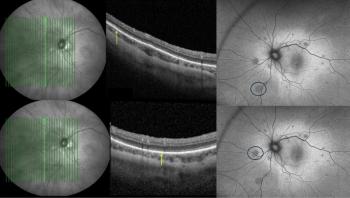
IO recession procedures are self-grading
Both inferior oblique (IO) recession in the primary position and in contralateral gaze are largely self-grading and there were no significant differences at three months postoperatively, states an investigation.
Both inferior oblique (IO) recession in the primary position and in contralateral gaze are largely self-grading and there were no significant differences at three months postoperatively, states an investigation.
A group managed by Dr Jun Ho Yoo, Department of Ophthalmology, Korea University College of Medicine, Seoul, Korea, retrospectively studied the records of 43 patients with IO muscle overaction linked to congenital unilateral superior oblique palsy.
The study group consisted of 17 patients who had a unilateral 10 mm recession and 26 patients who had a standard 14 mm recession who were assessed at three months postoperatively. Preoperative hyperdeviation minus postoperative hyperdeviation was used to measure the effect of the recession.
Average preoperative hyperdeviation was 13.4 ± 4.83 prism dioptres (PD) and 16.2 ± 6.32 PD in primary position and contralateral gaze, respectively in the 10 mm group. In the 14 mm group it was 8.0 ± 3.48 PD in primary position and 12.76 ± 4.55 PD in contralateral gaze.
Average hyperdeviation three months postoperatively was 2.1 ± 3.03 and 2.6 ± 3.95 PD in the 10-mm group in primary position and contralateral gaze, respectively. For the 14 mm group it was 0.8 ± 1.21 and 1.8 ± 1.95 PD for primary position and contralateral gaze, respectively.
To read the abstract please go to the latest edition of the
Newsletter
Get the essential updates shaping the future of pharma manufacturing and compliance—subscribe today to Pharmaceutical Technology and never miss a breakthrough.













































